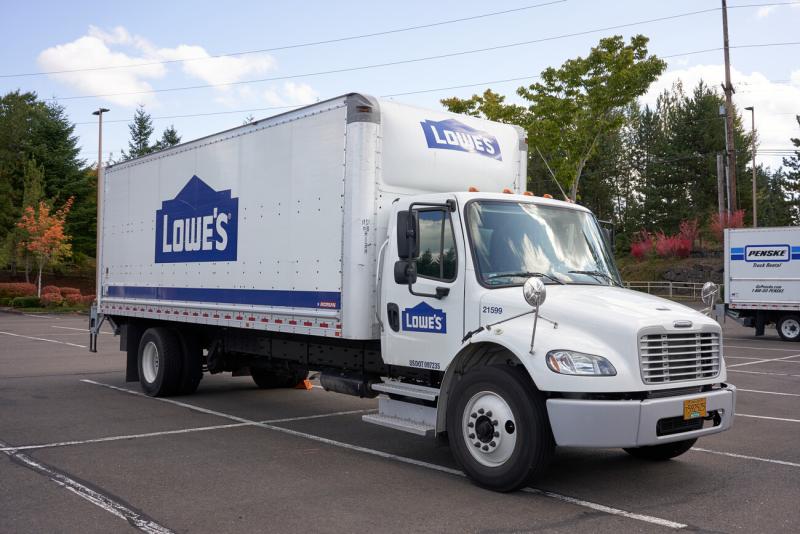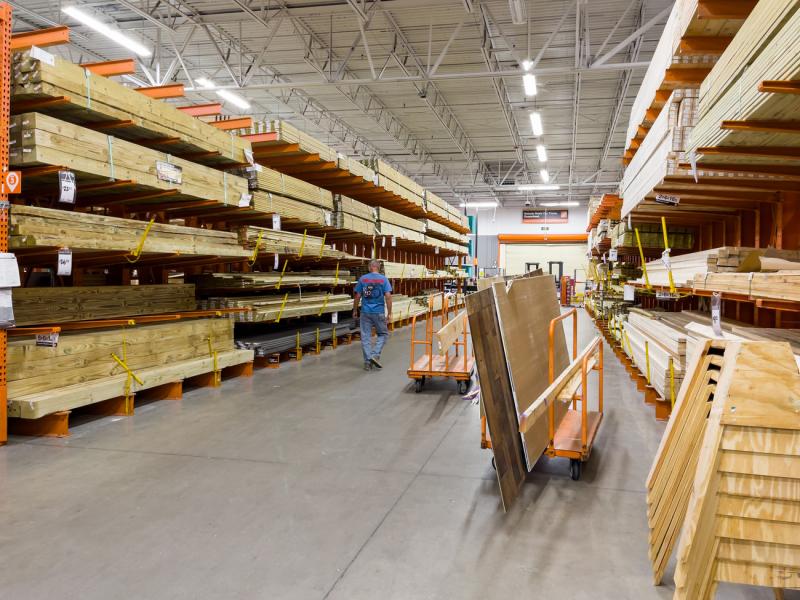Home Depot and Lowe’s CEOs Talk Supply Chain Transformation at Goldman Sachs Conference
The CEOs of two large home improvement retailers, The Home Depot and Lowe’s Cos., shared insights earlier this month into the impact of modernizing their respective company's supply chains.
Home Depot CEO Ted Decker and Lowe's CEO Marvin R. Ellison discussed these changes at the 30th Annual Goldman Sachs Global Retailing Conference on Sept. 13, 2023. Their experiences underscore the role that a well-optimized value chain plays in responding to industry pressures and maintaining a competitive edge.
Ellison, during the conference, reflected on Lowe's past challenges with supplier cost increases. Just a few years ago, the company lacked the necessary data and analysis capabilities to evaluate the legitimacy of these cost hikes.
He explained, “we had no visibility to component costs, and we had no real mechanism or analysis or any processes determine that.”
Now Ellison said Lowe’s is at a “very robust level” where it's “not uncommon for a supplier to come, recommend a cost increase, and before they leave, we have a cost decrease because our data set is so strong in our analysis is so in tune with all the components.”
He noted this extends beyond supplier costs as well. Lowe's now has better control and visibility over manufacturing and supply chain costs, and it’s one of the reasons why, when the company looks ahead to next year, “we don't see any real concerns about inflation or deflationary impacts to our business.”
Additionally, having end-to-end visibility, from manufacturing facilities to store shelves, has become a crucial advantage for Lowe’s.
“The modernization of our supply chain is also very tied to merchandising and how we flow products, and being able to have great visibility from manufacturing until it gets to the shares of the store. And then you take all that and then you put in a modern price management system — something that we've been working on for 3.5 years — that really would give us the ability to price effectively not only versus the competition, but understanding the price variance is required to drive customer demand.”
Ellison noted, "all of those things are a work in progress," highlighting that these improvements are part of a long-term strategy. Even though Lowe's has improved its operating margin by over 500 basis points in five years, the retailer remains committed to continuous improvement.
“My CFO, Brandon Sink, and I have a roadmap of initiatives that are multiyear that are in development from an IT investment and from an execution standpoint. We know the benefit that's going to be coming out of those initiatives over a time horizon. We call it our perpetual productivity improvement plan, or PPI. And not only does that perpetual productivity improvement exist in store operations, but it exists in merchandising, it exists in supply chain, it exists in all the functions of our company. And that gives us a line of sight that we can continue to drive operating margin improvement, and that's something that we're very committed to.”
The Home Depot Shares Delivery Improvements
When it comes to delivery, a paramount component of the value chain, The Home Depot's journey toward optimization has also evolved. As The Home Depot started to build out the next generation of its supply chain, the company recognized the pivotal role that efficient delivery plays in its operations.
During the conference, Decker highlighted three main components of delivery in its supply chain, commenting that while "you are never done with your supply chain," the goals Home Depot articulated back in 2017 are largely done.
Market Delivery Operations
The first of the three components being what The Home Depot calls market delivery operations (MDOs), box truck-enabled last mile delivery through Home Depot’s distribution hub.
Home Depot currently operates around 100 of these MDOs around the country, he said. This network predominantly caters to the retailer’s appliance business, handling millions of appliance deliveries a year.
Additionally, Decker said the last mile of the box truck operation itself has largely been third-party, but the recent acquisition of Temco marked a significant step toward insourcing more of this last-mile delivery. Future plans include expanding the product range, encompassing items like large grills and patio sets, to optimize efficiency.
Direct Fulfillment Centers
The second component, Decker noted, is Home Depot’s direct fulfillment centers (DFCs).
“We had a goal to be able to ship next-day to 90% of the country,” he said. “That’s essentially complete. We are high 80-percents. These are 1-million-square-foot big, big operations and largely complete.”
Flatbed Distribution Centers
The third component, he explained, is what the retailer calls “flatbed distribution centers.” These FDCs offer the capability to deliver products directly to customer job sites, alleviating the burden on in-store operations.
“They are a combination of a national footprint we have had for some time on lumber replenishment in big and bulky building material replenishment for our stores,” Decker said. “We now move those older BDCs into these new flatbed facilities and you add customer job site delivery capability in addition to the store re-plan.”
“So you are leveraging the inventory, you are leveraging the operation, you are taking that activity out of the store. We have always delivered that type product for years out of our store, but you just think of the double and triple handling that goes on the product out of the store. It’s a retail environment. It’s not a wholesale distribution environment.”
This approach of taking that activity out of the store ensures more effective service, improved customer satisfaction, and on-time, complete deliveries. While a number of the flatbed distribution centers are up and running, the company still has room to grow, Decker noted. “I don’t even know if we are halfway done in terms of the flatbed to the customer,” he said.




